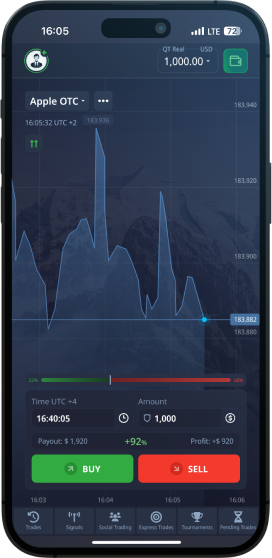
Mastering Your Trades: A Comprehensive Guide for the Pocket Option Trader
If you’re an aspiring or seasoned investor, mastering the art of trading on platforms like Pocket Option Trader Pocket Option trader can open doors to new financial opportunities. This article aims to provide you with a wealth of information designed to enhance your trading skills, ensure wise investments, and ultimately help you achieve profit. We will cover essential strategies, insightful tips, market analysis methods, and the importance of understanding trading psychology.
Understanding Pocket Option
Pocket Option is a user-friendly trading platform that allows users to trade a variety of assets, including currencies, commodities, and stocks. Launched in 2017, the platform has quickly become popular due to its intuitive interface and a range of trading tools. For both beginners and experienced traders, Pocket Option provides a blend of simplicity and advanced features that can cater to diverse trading styles.
Key Features of Pocket Option
- Low Minimum Deposit: Traders can start with a minimal deposit, making it accessible for everyone.
- Diverse Asset Selection: Trade a range of assets including forex, cryptocurrencies, and stocks.
- High Payouts: Competitive payout rates that can go up to 90% or more on successful trades.
- Demo Account: Perfect for beginners, the demo account allows users to practice trading without risk.
- Flexible Trading Options: Users can choose from various trading methods, including binary options and forex trading.
Developing a Trading Strategy
Success in trading requires having a well-defined strategy. As a Pocket Option trader, you need to create a strategy that aligns with your trading goals, risk tolerance, and market conditions. Here are some commonly used strategies that can enhance your trading experience:
1. Trend Following Strategy
This strategy is centered on analyzing the market trends to make informed decisions. Traders aim to identify whether the market is moving upward (bullish) or downward (bearish) and trade accordingly. Use technical indicators such as moving averages or the Relative Strength Index (RSI) to help spot trends.
2. News Trading
Economic events and news releases significantly impact market movements. Keeping abreast of major news can provide crucial insights for trading opportunities. By trading around key events, traders can capitalize on volatility and price shifts.
3. Scalping
Scalping is a technique where traders make small profits on numerous trades over short timeframes. This strategy requires quick decision-making and can often be profitable in volatile markets. It is essential for scalpers to have a strict entry and exit strategy to manage risks effectively.
Understanding Technical Analysis
A pivotal aspect of trading is mastering technical analysis. This involves evaluating price charts and using various indicators to predict future price movements. Here are some essential components of technical analysis every Pocket Option trader should know:
Chart Types
Different chart styles can offer varying insights. The most common types include:
- Line Charts: These provide a simple visualization of price movements over time.
- Bar Charts: A more complex style that shows opening, closing, high, and low prices.
- Candlestick Charts: Highly effective for time analysis, these charts depict the same information as bar charts but in a visually appealing format.
Indicators
Utilizing indicators can help in identifying potential market reversals and trends. Some common technical indicators include:
- Moving Averages: Helpful for smoothing price data and identifying trends.
- Bollinger Bands: Used to measure market volatility and identify overbought or oversold conditions.
- MACD: This momentum indicator helps identify potential price reversals and the strength of trends.
Emotional and Psychological Factors in Trading
Trading is as much a mental game as it is a numbers game. Managing your emotions is crucial to making rational decisions and staying disciplined. Here are some psychological aspects every trader should be aware of:

1. Patience
Successful trading requires patience. Waiting for the right setup and not forcing trades can significantly improve your results.
2. Discipline
Having a clear plan and sticking to it is vital. Avoid the temptation to deviate from your strategy due to fear or greed.
3. Acceptance of Losses
Losses are an inevitable part of trading. Accepting this fact and learning from each loss can help improve your future performance.
Risk Management in Trading
Effective risk management is critical for ensuring your longevity as a trader. Without it, even a small number of bad trades can wipe out your account. Here are several key risk management techniques:
1. Setting Stop-Loss Orders
Stop-loss orders can help you limit your losses by automatically exiting a trade once it reaches a predetermined price. Properly set stop-losses can protect your capital in volatile markets.
2. Position Sizing
Deciding how much to invest in a trade is crucial. It’s essential to never risk more than a small percentage of your trading capital on a single trade.
3. Diversification
Spreading your investments across various assets can reduce risk. If one market moves against you, other positions can potentially compensate.
Continuing Education and Improvement
The financial markets are continuously evolving, and there’s always something new to learn. Here are some avenues for improving your trading skills:
1. Online Courses and Webinars
Many platforms offer educational resources that cover everything from basic concepts to advanced strategies. Engage with these materials to become a better trader.
2. Join Trading Communities
Participating in trading forums or social media groups can provide valuable insights, tips, and support from fellow traders.
3. Keep a Trading Journal
Documenting your trades can help you analyze your performance, identify patterns, and improve your future decision-making.
Conclusion
Navigating the world of trading can be daunting, but with a solid understanding of platforms like Pocket Option, a well-defined strategy, and effective risk management, anyone can experience success. Remember to stay disciplined, keep learning, and continually adapt to the ever-changing market. By applying the tips and strategies discussed in this article, you can significantly enhance your trading experience and work towards becoming a proficient Pocket Option trader.
